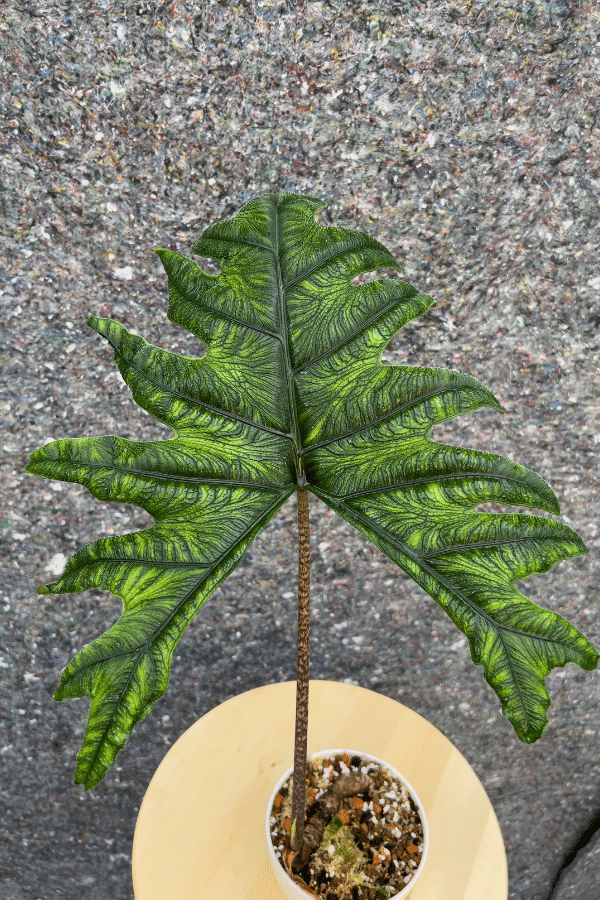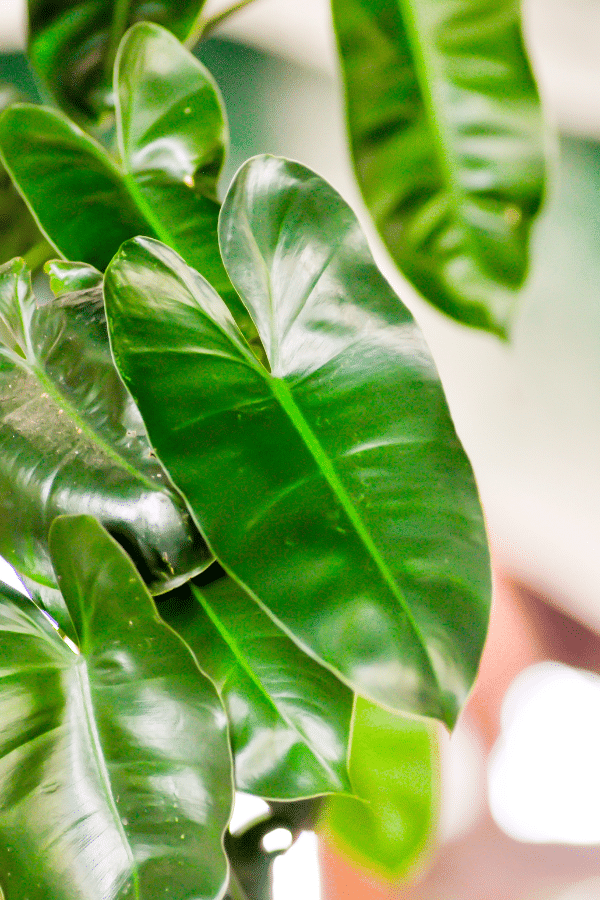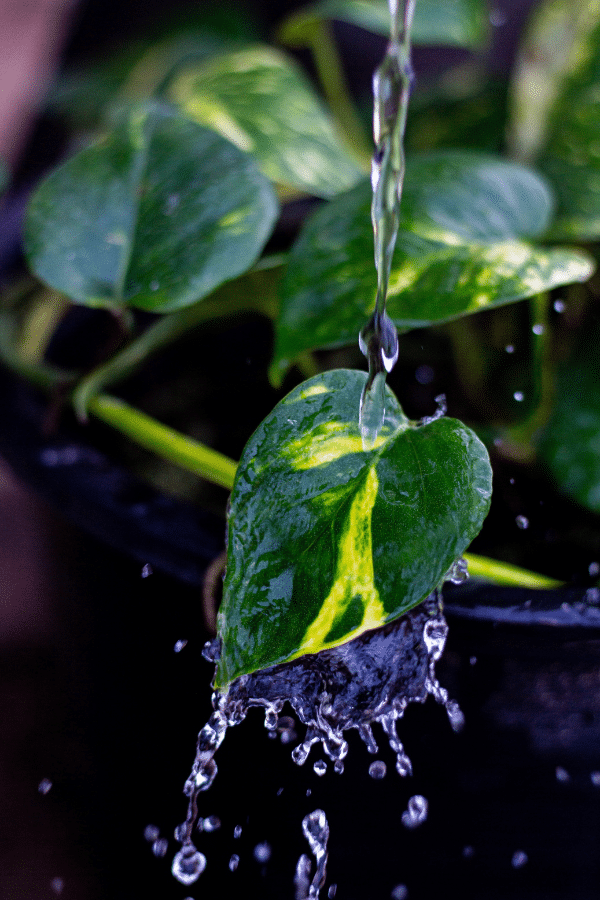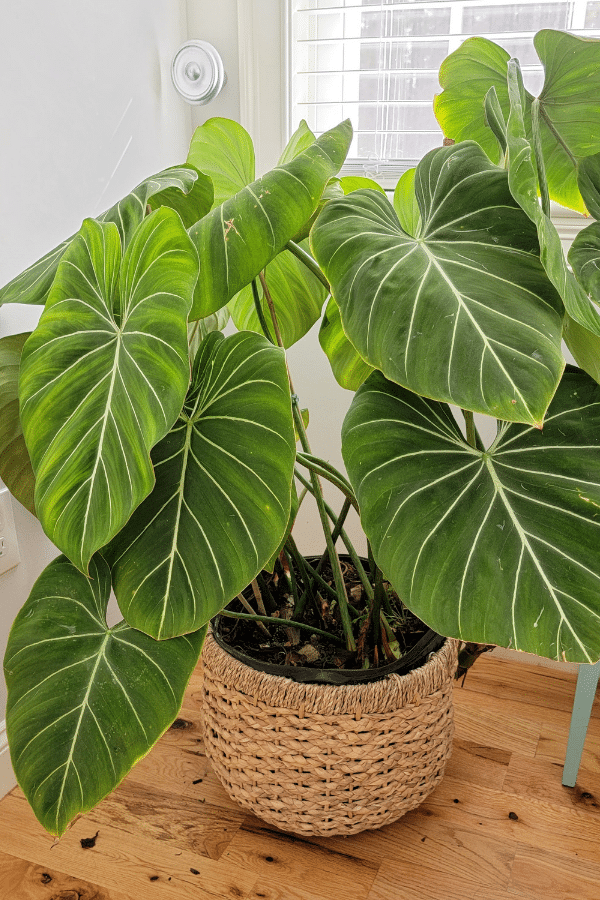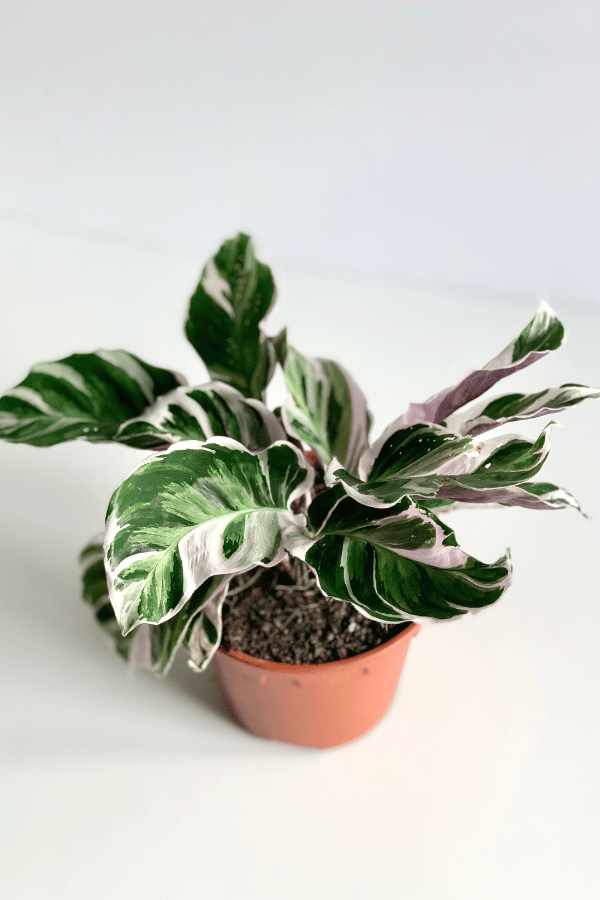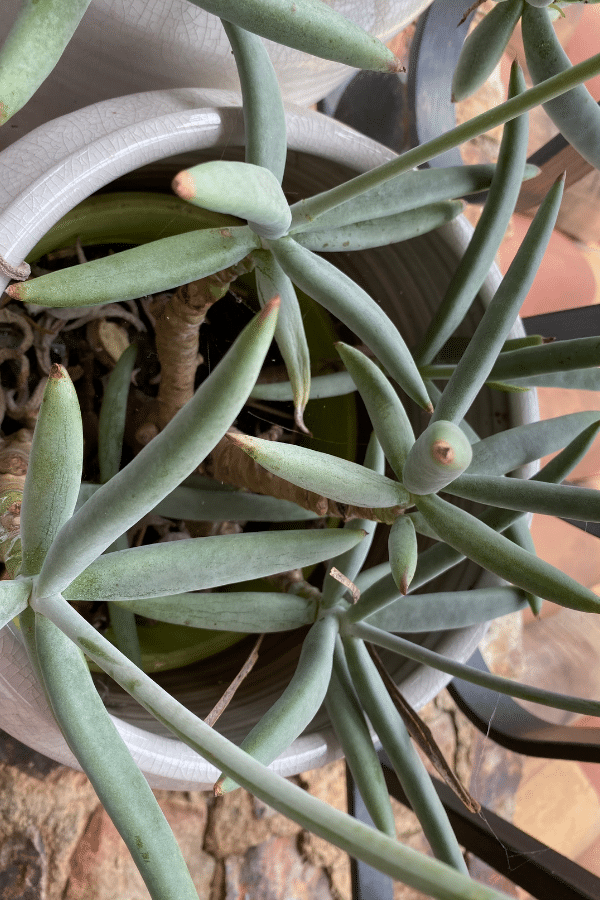Philodendron Brandtianum
Scientific Name: Philodendron Brandtianum
Common Name: Silver Leaf Philodendron, Philodendron Brandi
The Philodendron Brandtianum, more commonly called Philodendron Brandi or Silver Leaf Philodendron is a gorgeous, striking, and bold Philodendron that brings uniqueness to all of the other plants in your collection. Keep reading this ultimate Philodendron Brandtianum care guide to see if you should bring this plant home.
Quick Care Overview
| Common Name | Silver Leaf Philodendron |
| Scientific Name | Philodendron Brandtianum |
| Family | Araceae |
| Origin | Brazil, Colombia, Ecuador, Peru, Bolivia |
| Growth Rate | Medium to Fast |
| Identification | Heart-shaped olive green leaves with silver streaks |
| Height | Up to 15 feet tall |
| Soil | Loose, airy soil with drainage |
| Water | Frequent watering, but let top inch dry before watering |
| Temperature | 50-95F |
| Sunlight | Bright indirect sunlight |
| Toxic to Cats & Dogs | Yes |
| Toxic to Humans | Yes |
| Pests | Mealybugs, aphids, spider mites |
| Diseases | Root rot |
Below we will dive deep into how to care for Philodendron Brandtianum.
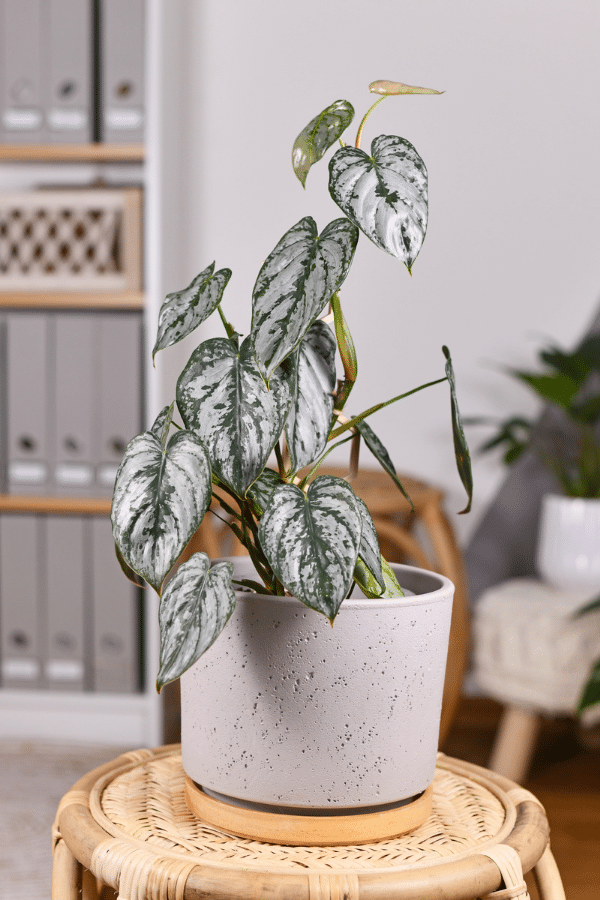
Philodendron Brandtianum History
Belonging to the Araceae family, Philodendron Brandtianum, also known as the Silver Leaf Philodendron, is a beautiful terrestrial houseplant native to South America and was first discovered by botanist Auguste de Saint-Hillaire.
The silver leaf philodendron is in the subfamily of Phildendroidea that includes up to 2700 species of plants known for their climbing tendencies and heart-shaped leaves. Philodendron Brandtianum is known for its silver, large leaves.
Philodendron Brandtianum Identification
Often classified as a climbing plant that can sprawl out to 15 feet, this philodendron often requires tall structures to climb on. This plant is known for its olive-green heart-shaped leaves with bright silver striations. Young leaves are vibrant and plentiful and have orangish hues which deepen into a dark green color with maturation. Leaves may become up to 3 feet long and 2 inches wide.
Philodendron Brandtianum Growth Facts
Philodendron Brandtianum is considered a quick-grower and under cultivation, may grow up to an inch per month under ideal conditions.
How Big Does a Philodendron Brandtianum Get?
The Philodendron Brandtianum plant may grow up to 15 feet long.
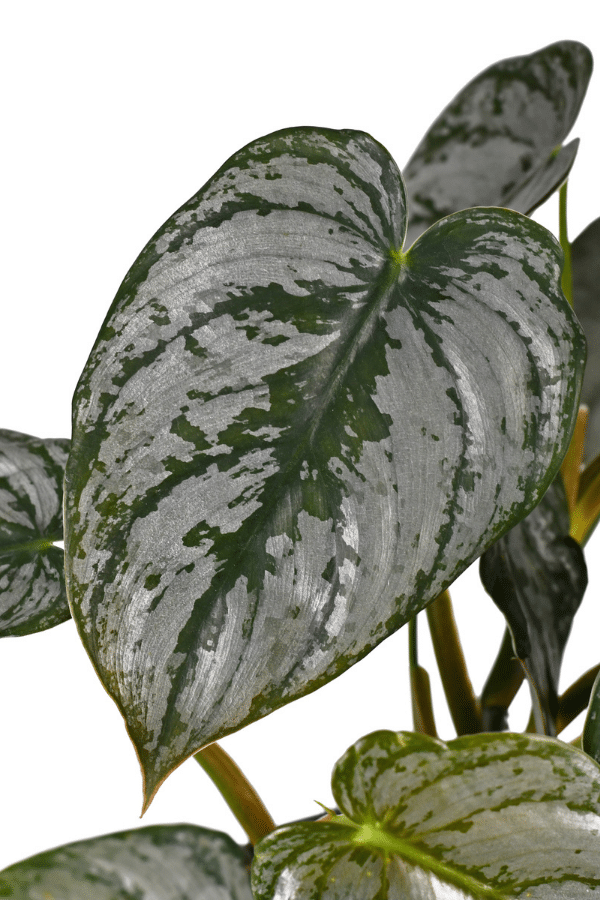
Philodendron Brandtianum Care
This quick-growing, climbing Philodendron is easy to care for and makes a perfect plant for terrariums, hanging baskets, or bookshelves. A loose soil that will retain water yet has drainage and a good fertilizing schedule will aid in good growth for Philodendron Brandi. Bright indirect sunlight, temperatures between 50-95F with average humidity levels, and moist soil but not soggy will be the best Philodendron Brandtianum care.
Philodendron Brandtianum Soil
Like most Philodendrons, Philodendron Brandtianum will enjoy a loose, airy, growing medium suitable for aroids with ample drainage that will adequately retain water. A commercial cactus or aroid substrate will be ideal for this Philodendron. Additionally, organic matter incorporations such as compost, coco coir, or sphagnum peat moss may be added to boost the nutrients in the soil. Soilless mixes made of peat moss or perlite will also work.
Philodendron Brandtianum Fertilizer
Philodendrons are quick growers and as such, they perform better with a good fertilizer regimen. Therefore, you should feed your philodendron with a balanced liquid houseplant fertilizer monthly throughout the growing season. Ensure that you follow all label instructions and do not fertilize during the winter months.
Philodendron Brandtianum Watering
Like many other Philodendrons, Silver Leaf Philodendron requires frequent watering and likes to remain moist. Under most growing conditions, your Philodendron will need to be watered around 2-3 times weekly. However, when the weather cools, watering frequency can be reduced to about one time per week. Allow the upper inch or so of soil to dry before rewatering. It is important not to overwater, as this may lead to fungal and bacterial disease. Drooping and curling of leaves are often indicative of an inadequate watering regime. Be sure to get to know your Brandtianum plant and provide it with the correct amount of water.
You may use tap water if you don’t have filtered water or distilled water. Be sure to let the tap water sit overnight to rid the chlorine and other chemicals from the water so this doesn’t give your plant too many heavy salts.
Philodendron Brandtianum Light Requirements
Philodendron Brandtianum will require bright indirect light levels to be happy. A north or east-facing window should suit this plant well. These Philodendrons will tolerate partial shade as well. It is important to keep these Philodendrons away from extended exposure to direct sunlight and intense sunlight at peak hours, as this will cause leaf scorching. You can place this plant on a tabletop to let climb or a hanging basket and let cascade.
Philodendron Brandtianum Temperature & Humidity
Being of tropical origin, Philodendrons like warm and humid climates. 50 degrees to up to 95 degrees Fahrenheit are the ideal temperature for this terrestrial plant. It is important to note that this plant must not be put in environments under 50 degrees Fahrenheit, as this may cause permanent damage to the plant. The Silver Leaf Philodendron will thrive in above-average humidity. Adding a pebble tray, humidifier, or misting the leaves is suggested to aid the growth of this houseplant. Ensure, however, that your philodendron is not overly saturated with water, as this may cause fungal growth or leaf rot.
Repotting Philodendron Brandtianum
Repotting of Philodendron Brandtianum should be done about every two to three years or when roots are seen sticking out through the drainage holes, whichever comes first. Repot in spring or early summer. Select a pot that is one size larger than the previous one. Place new soil, like sphagnum moss or soilless mixtures like peat-perlite or peat-vermiculite in the clean pot, and place the Silver Leaf into the pot. Surround the roots with soil, lightly tamp, and water. Place it in indirect light to grow.
Give Philodendron Brandi a lot of space and do not place near radiators, vents, or air conditioners.
Philodendron Brandtianum Maintenance & Pruning
This Philodendron does not need to be pruned. Remove discolored leaves periodically to enhance the appearance and improve growth will be one of the things to do for the best Philodendron Brandtianum care.
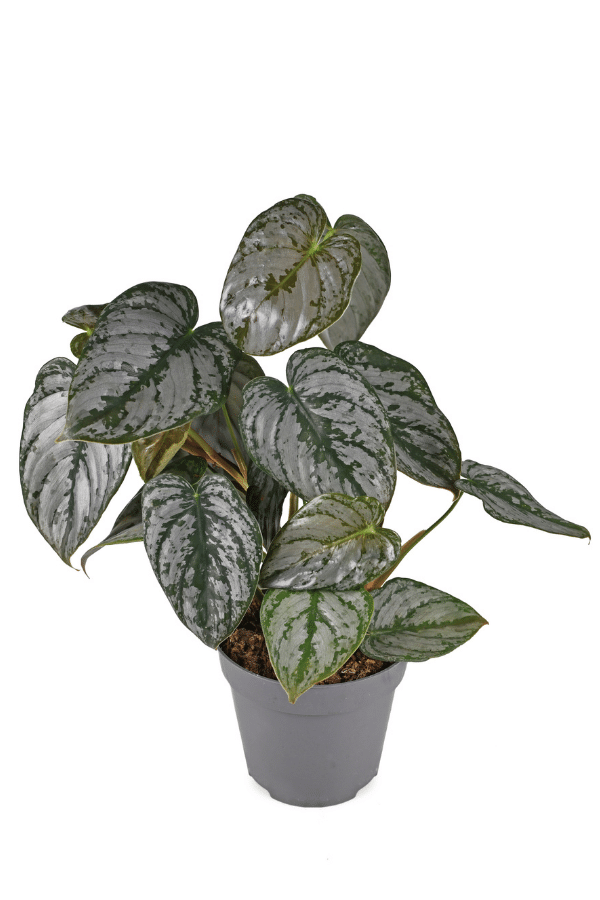
Philodendron Brandtianum Propagation
The Philodendron Silver Leaf can be propagated through air layering, stem cuttings, root division, or from seed. To take a stem cutting, cut a piece of stem with clean scissors that is a couple of inches long just below the nodes. Place into a jar filled with water and watch as roots appear in as little as ten days. Do not allow leaves to become submerged. After roots have appeared and are about two inches in length, the cutting may be planted into its own container with fresh soil. Keep the soil moist and place it in indirect light to grow. Alternatively, to propagate from root division, remove the mother plant and divide the roots into clumps. Repot the separate clumps into their own containers, refresh the soil, water, and place them in indirect light.
Philodendron Brandtianum Toxicity
Philodendron Brandtianum is a toxic indoor plant and should never be ingested. It contains calcium oxalate crystals, which can cause digestive issues, irritation, vomiting, and diarrhea when ingested. Keep this plant out of reach of children and animals.
Toxicity to Humans
Like many other Philodendrons, Silver Leaf is considered toxic. Ingestion of this plant may cause irritation and GI upset. Do not consume any portion of this plant.
Toxicity to Cats & Dogs
This plant is considered toxic to pets and should not be ingested. If any portion of this plant is suspected of being ingested by your pet, contact your veterinarian or animal poison control.
Philodendron Brandtianum Problems
Philodendron Brandtianum Leaves Turning Yellow
This Philodendron may show yellow leaves from improper lighting conditions or overwatering. Allow the top portion of the soil to dry out between waterings.
Philodendron Brandtianum Leaves Turning Brown
Browning of the leaves is most commonly caused by leaf scorching or insufficient humidity. However, brown spots on the leaves may sometimes be indicative of plant disease. Be sure to provide the Silver Leaf with bright but indirect sunlight and adequate humidity (50-60%).
Philodendron Brandtianum Diseases
Philodendron Brandtianum is particularly susceptible to root rot. Ensure that your plant’s container has proper drainage and that you do not overwater or allow your philodendron to sit in standing water within the plant’s tray to avoid bacteria and fungus growth.
Philodendron Brandtianum Pests
Just as with many other houseplants, mealybugs, aphids, and spider mites may become a nuisance to the Philodendron Brandtianum houseplant. Once you identify an infestation, isolate the plant, and treat it with a pesticide soap or neem oil. Follow all label instructions.
FAQ
Do Philodendron Brandtianum Like to Be Root Bound?
The Philodendron Brandtianum does not like to be root bound and being root bound can stunt growth. Repot when you notice its roots peeking around the soil or through the pots drainage hole.
How Do You Make Philodendron Brandtianum Leaves Bigger?
To be rewarded with large Brandtianum leaves, let the plant climb and sprawl and give lots of bright light. When the leaves receive sunlight, they absorb it and their leaf size will grow.

